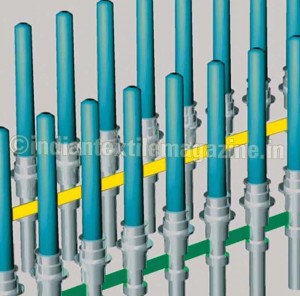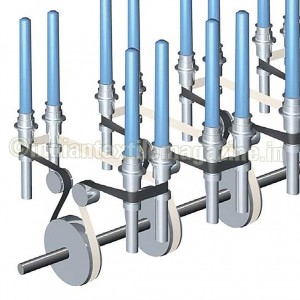
Habasit Group’s consolidated sales during 2013 increased by 3.5 per cent compared to the previous year, while the net sales growth in local currencies was 5.2 per cent. The group EBIT increased proportionally by more than 10 per cent. With the cash position further strengthened, the equity ratio remained stable at 73 per cent.
During the year Habasit continued reinforcing its presence in all markets through expansion of the existing subsidiaries and incorporation of several small-scale acquisitions, the takeover of the remaining 49 per cent shares of the Indian subsidiary being the most noticeable among them.
As a result of the good business development all the manufacturing facilities have benefited from higher demand, and fresh investments have been made to improve their quality and operational excellence.
In the first half of 2014, the group registered an acceleration in growth in all markets and remains optimistic about another successful business year.
The new polyester spindle tape DS-8 is particularly suitable as a driving belt for medium- and high-end spinning machines with spindle speeds above 18,000 rpm. It perfectly combines long belt life, high performance and best-in-class lifecycle costs.

OEMs benefit from high reliability, good operational performance, long belt life, fewer complaints from users, and therefore lower warranty costs. Yarn manufacturers benefit from low energy consumption, reduced maintenance, uniform spindle speeds, excellent and consistent yarn quality, and high output from yarn processing machines.
The new S-200HRN polyamide power transmission belt is particularly suitable as driving belt for medium performance OE-spinning and carding applications. It perfectly combines robustness, long belt life, high performance and excellent life-cycle costs.
S-200HRN is a 2 mm thick polyamide power transmission belt for medium and low end OE-spinning (< 80’000 rpm) as well as for carding applications. The belt with proven polyamide traction layer and durable elastomer top offers outstanding abrasion resistance and uniform grip during the entire belt life.
While OEMs benefit from high reliability, good operational performance, long belt life, fewer complaints from users, and therefore lower warranty costs, EUs benefit from reduced maintenance, uniform spindle speeds and high output from yarn processing machines.